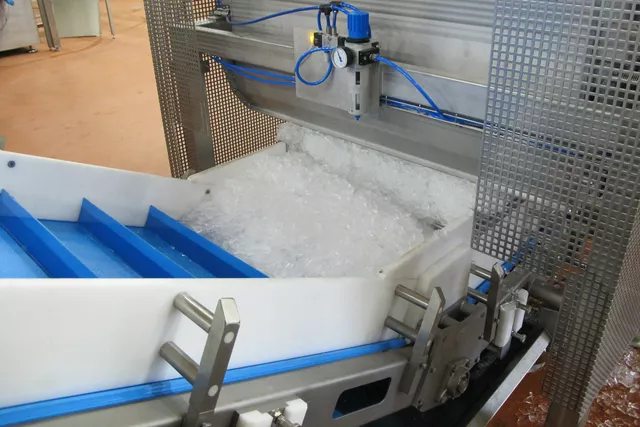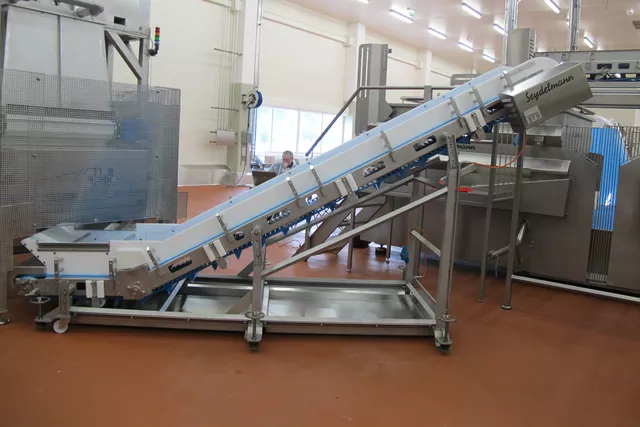Flake Ice Storage Systems: Efficient Industrial Ice Buffering
Introduction: The Importance of Flake Ice Storage in Industrial Cooling
Industrial processes often rely on flake ice for its excellent cooling capacity and handling properties. But beyond ice production, proper storage and delivery of ice plays a key role in energy management and process stability. A flake ice storage system offers flexibility by decoupling ice generation from consumption. Ice can be produced during low-tariff energy hours and stored for peak demand periods – ensuring process continuity and energy savings.
What Is a Flake Ice Storage System? Structure and Operation
A flake ice storage system typically consists of a closed, insulated silo. Ice is fed in from the top via screw conveyors, gravity chutes or belts and is discharged from the bottom through a rotating screw. The system operates on the FIFO principle (First In – First Out) to ensure consistent ice quality.
Our flat-bottom discharge system ensures uniform, clog-free output and eliminates the need for manual ice shoveling. The discharged ice can be further processed or dosed precisely using weighing systems or feeders.
Benefits and Highlights
Time-independent ice production and use
No bridging or clumping, even during extended storage
Full automation reduces labor and improves hygiene
Easy installation via modular, segmented design
Use of low-energy hours for cost-optimized ice generation
High product quality through closed, stainless-steel systems
Construction and Transport Systems
The silos are available in vertical design with stainless-steel casing and optional insulation for outdoor use. Ice discharge is handled via a horizontal screw at the base, which avoids blockages. Depending on spatial constraints, the system can be designed for gravity-fed discharge directly into ice boxes, avoiding complex conveyor installations.
Materials and Manufacturing
All ice storage systems are built from high-grade stainless steel, fully enclosed and weld-sealed for food and pharma compliance. Optional thermal insulation enables outdoor operation in a wide range of climates. Modular construction ensures simple transport and on-site assembly, even for large capacities.
Typical Applications
Food industry: Cooling of fish, meat, vegetables, fruit
Pharma production: Process chilling and ingredient conditioning
Chemical sector: Cooling during batch processes
Concrete plants: Controlling concrete temperature in hot climates
Energy: Ice storage for load shifting and energy balancing
Technical Summary
| Feature | Specification |
| Capacity | 5–50 tons of flake ice per silo |
| Design | Closed vertical silo, modular and insulated |
| Material | Stainless steel, corrosion-resistant |
| Discharge System | Automated flat-bottom auger |
| Storage Principle | FIFO – First In, First Out |
| Ice Transfer Options | Screw conveyor, gravity chute, belt, direct drop |
| Cleanability | Hygienic, maintenance-friendly |
| Integration | Compatible with dosing and weighing systems |

